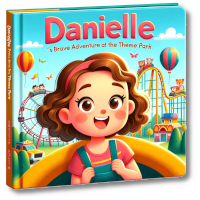Reading with children
a blog by Magic Tales

Imaginary Friends and Our Young Readers: Helping your child navigate fantasy and reality
How many times have you heard your child chattering away in an empty room, only for them to casually respond when asked, 'I was talking to my imaginary friend.' Imaginary friends can be an adorable and healthy aspect of your child’s development, but they can also sometimes be troubling for parents and guardians, as they blur the boundary between fantasy and reality. In this blog post, let's shift our focus to how we, as the adults in their lives, can assist in helping them navigate this fascinating phase.
The Origin of Imaginary Friends.. In Books?
There's a high chance that the conception of an imaginary friend started with a character from your child’s favorite book. Children can form such strong connections to characters that they start to 'exist' in real life for them. Instead of being alarmed, parents and guardians should celebrate this as a victory, as it's a clear indication of the impact that books and reading are making in your child's life. They are engaging with characters, investing in their emotional journeys, and allowing them to exercise their imagination.
Understanding Your Child’s Imaginary Friend
Principally, it's important to remember that imaginary friends are essentially an extension of your child’s imagination, a mechanism to express their feelings, a tool to make sense of the adult world and sometimes, a companion when they are feeling lonely or scared.
Moreover, engaging with your child’s imaginary friend can provide unique insights into their thoughts, anxieties, and comprehensions of the world around them. Drawing parallels with their favorite books, and creating discussions around the other characters seen in those books can offer opportunities for productive conversations.
How Can You Help?
Normalize it: Firstly, accept the imaginary friend. This can be a difficult process for parents, especially when your child prefers the company of their imaginary friend over real people. However, it's a common and normal part of childhood.
Participate in their world: Engage your child by asking about their imaginary friend. Inquire about what they like to do, what their favorite book is, why they like them and so on. This will show your child that you value their thoughts and respect their world. This can even be correlated to the characters they read about in books, helping them understand more about character diversity and roles.
Address problems responsibly: If your child starts blaming their imaginary friend for negative actions (like misbehavior), it's essential to draw a line. Use their favorite characters in books as examples of responsibility, honesty, and good behavior.
Imaginary ≠ Real: Lastly, ensure your child understands the difference between imaginary and real, especially in regards to safety. If their imaginary friend is a superhero who can jump off buildings, use examples from books where characters prioritize safety.
In conclusion, every child's journey with an imaginary friend unfolds uniquely, and it's always imperative to ensure it's a healthy and positive experience. With the right approach and some help from their favorite books, you can help your child make the most out of their imaginative friendships, and foster a deeper love for reading along the way.
Want a personalized book to read with your child about Imaginary Friend?
Takes as quickly as 30 seconds to create
Create a book about Imaginary Friend

